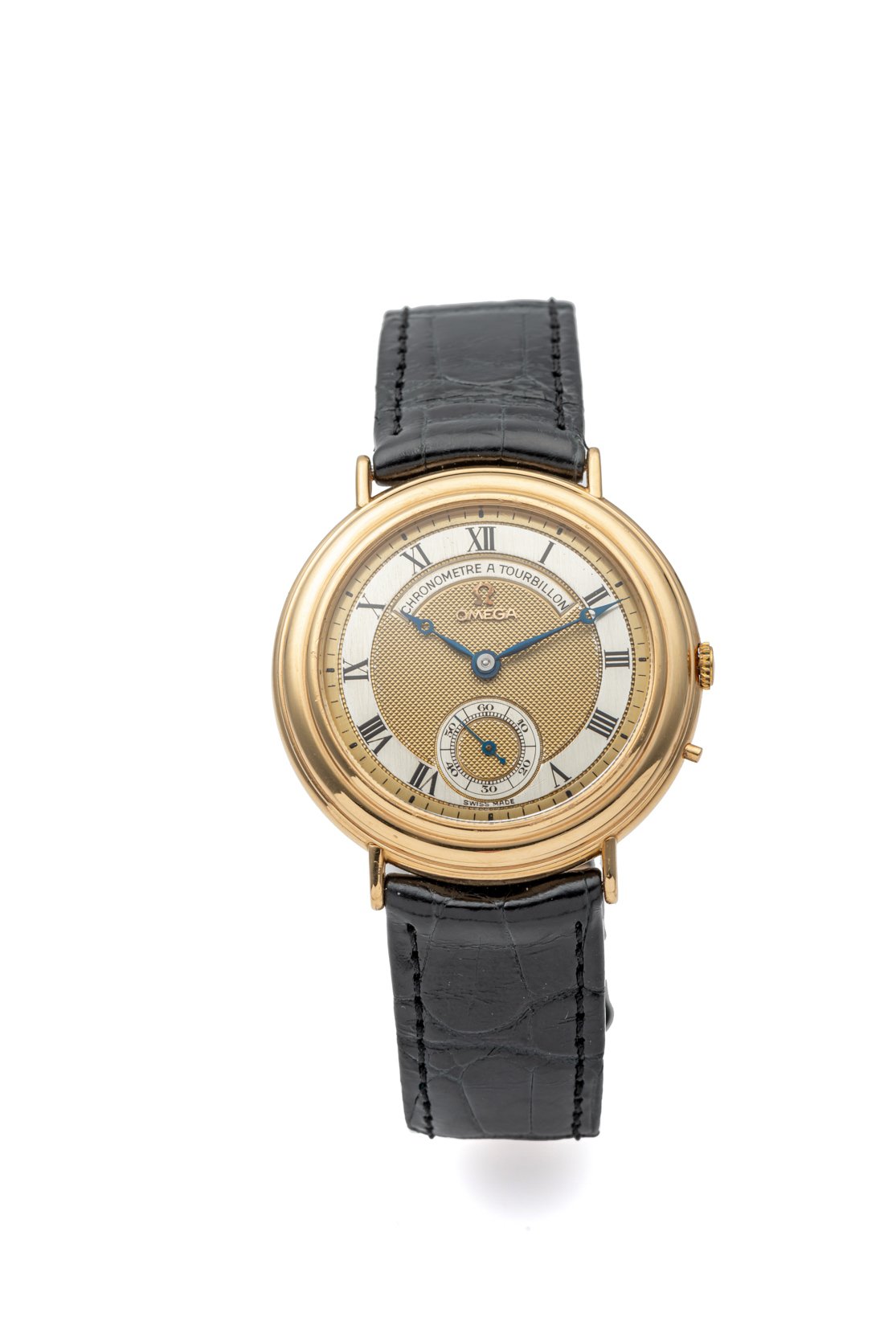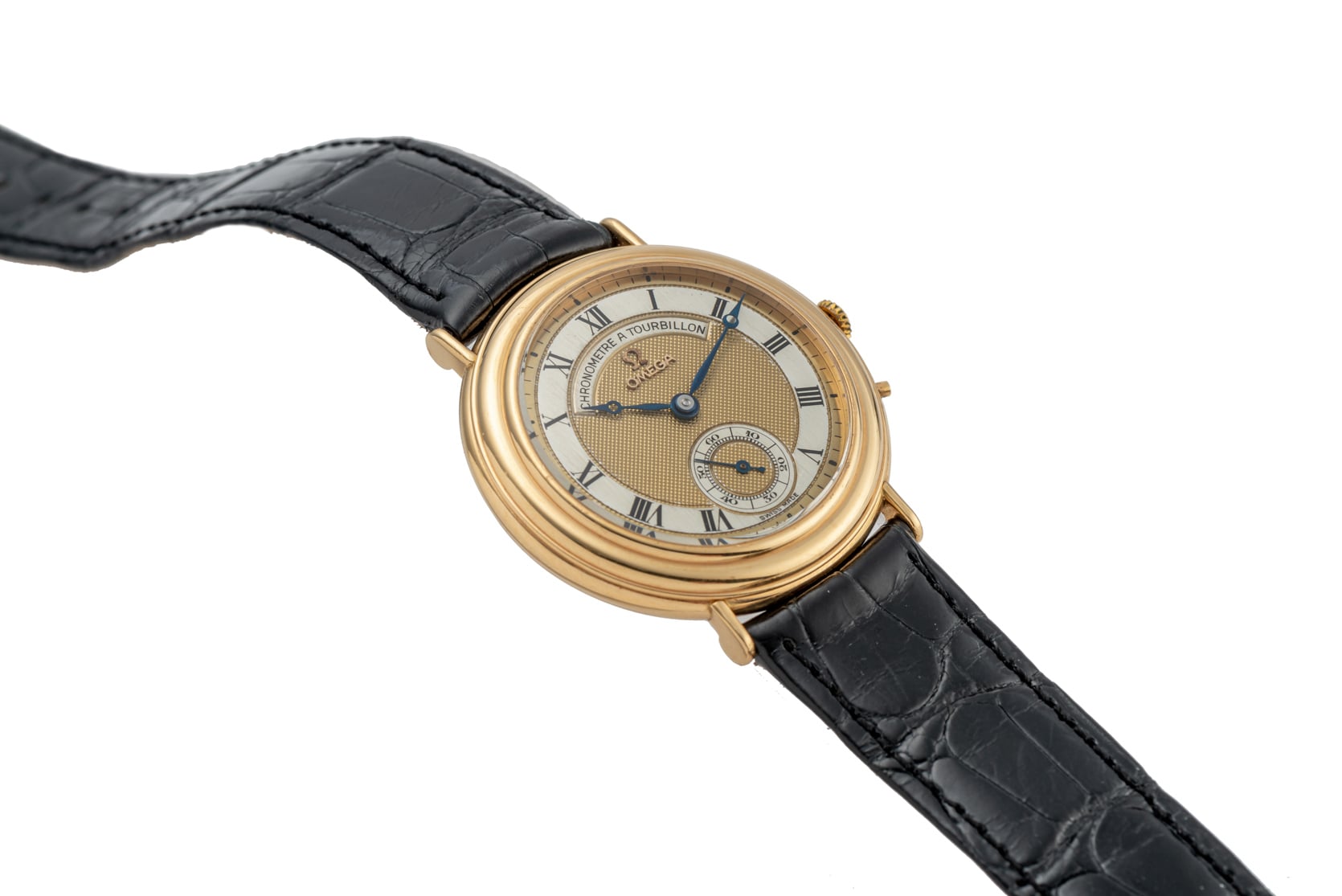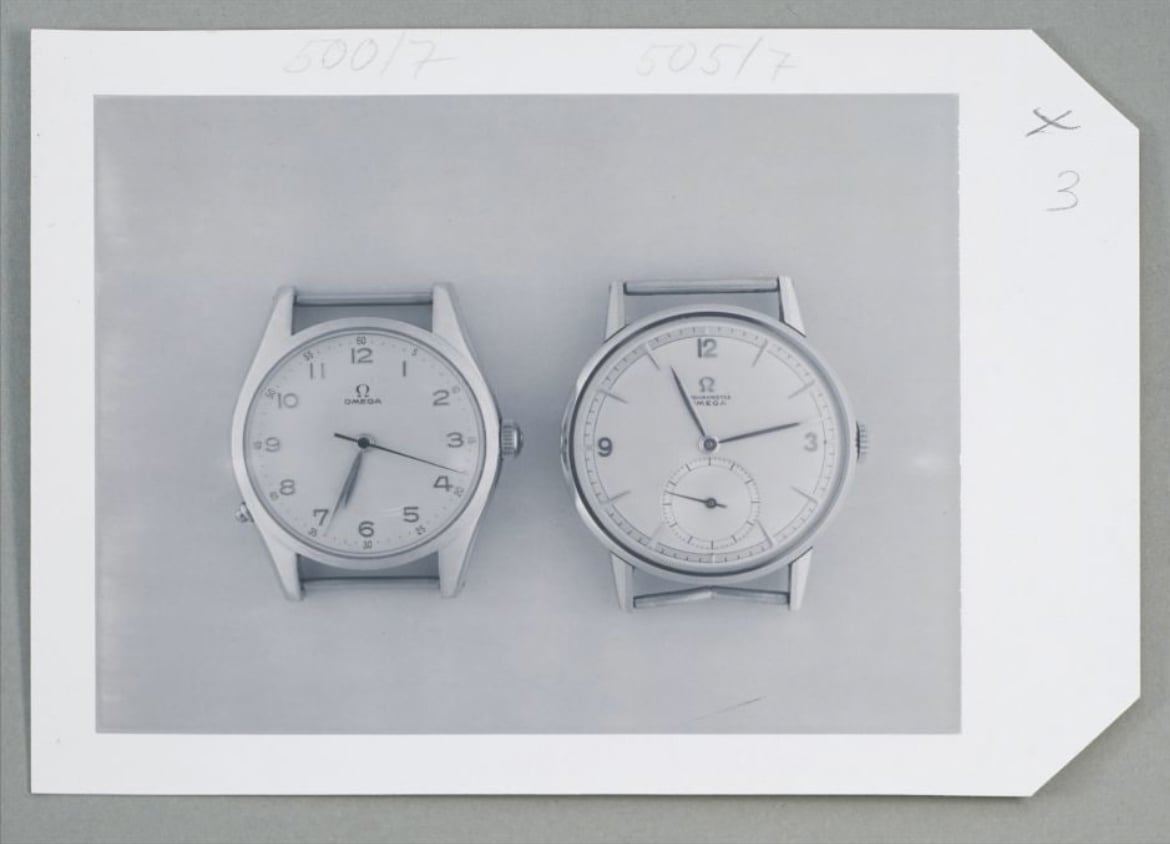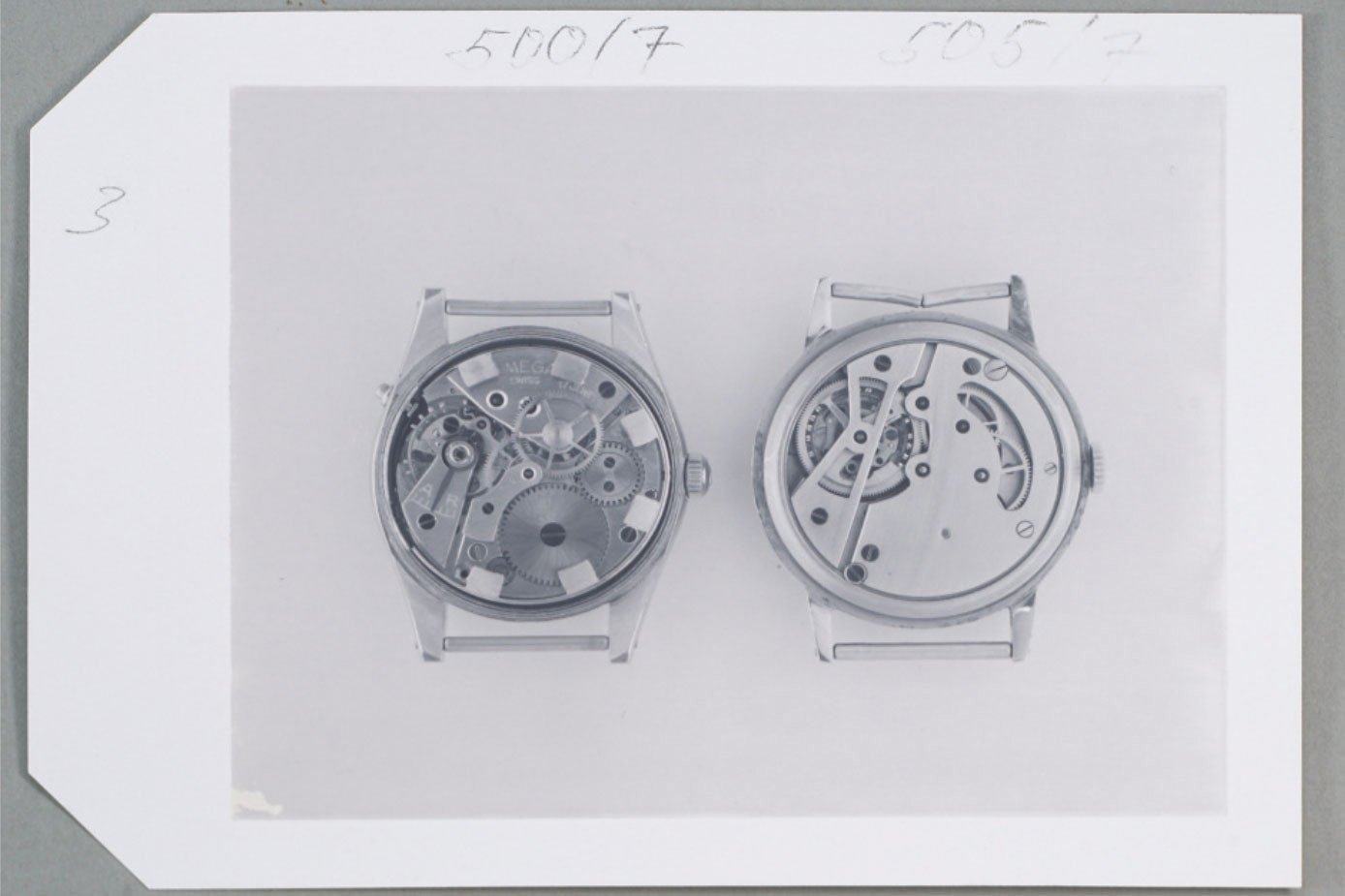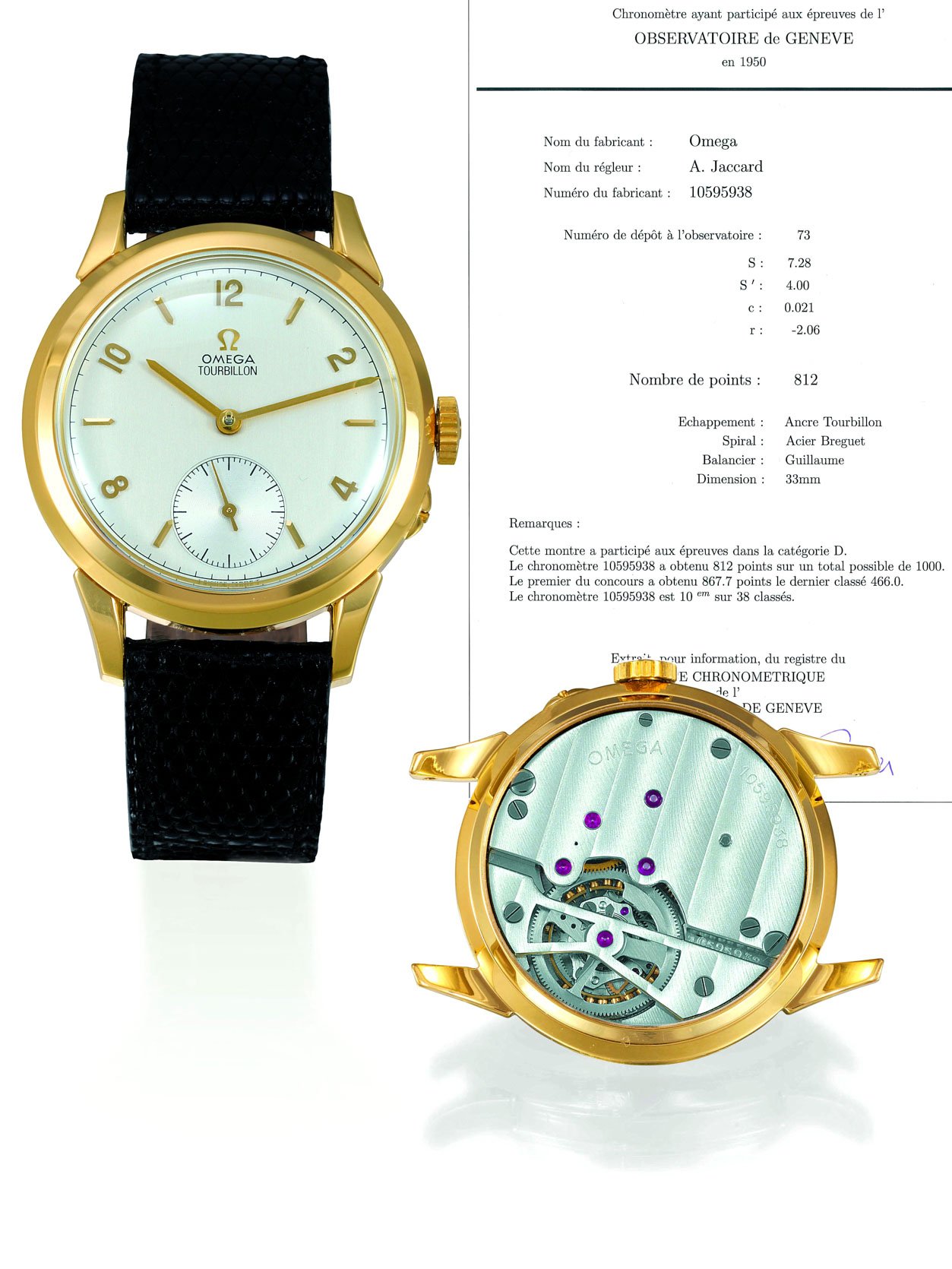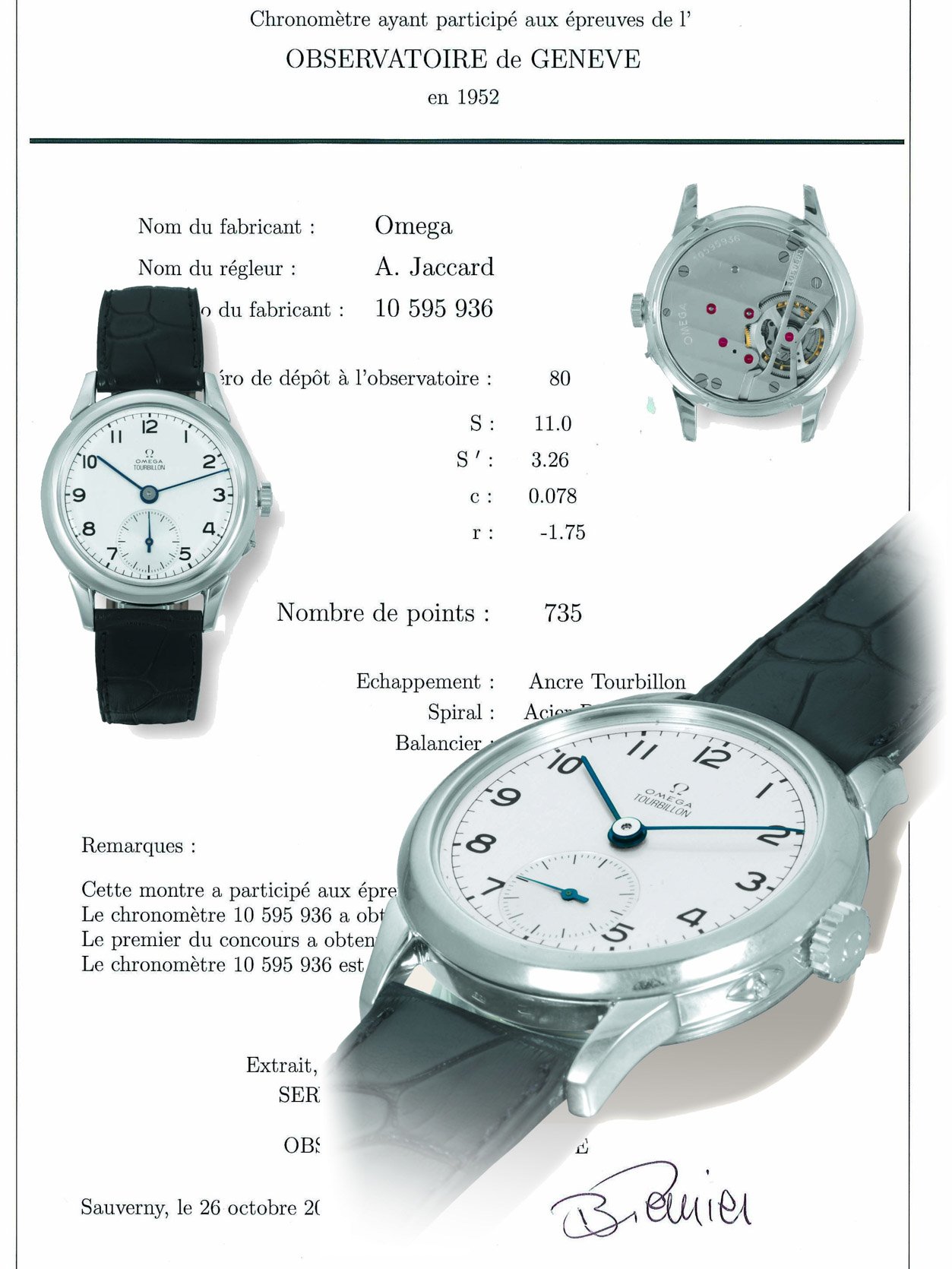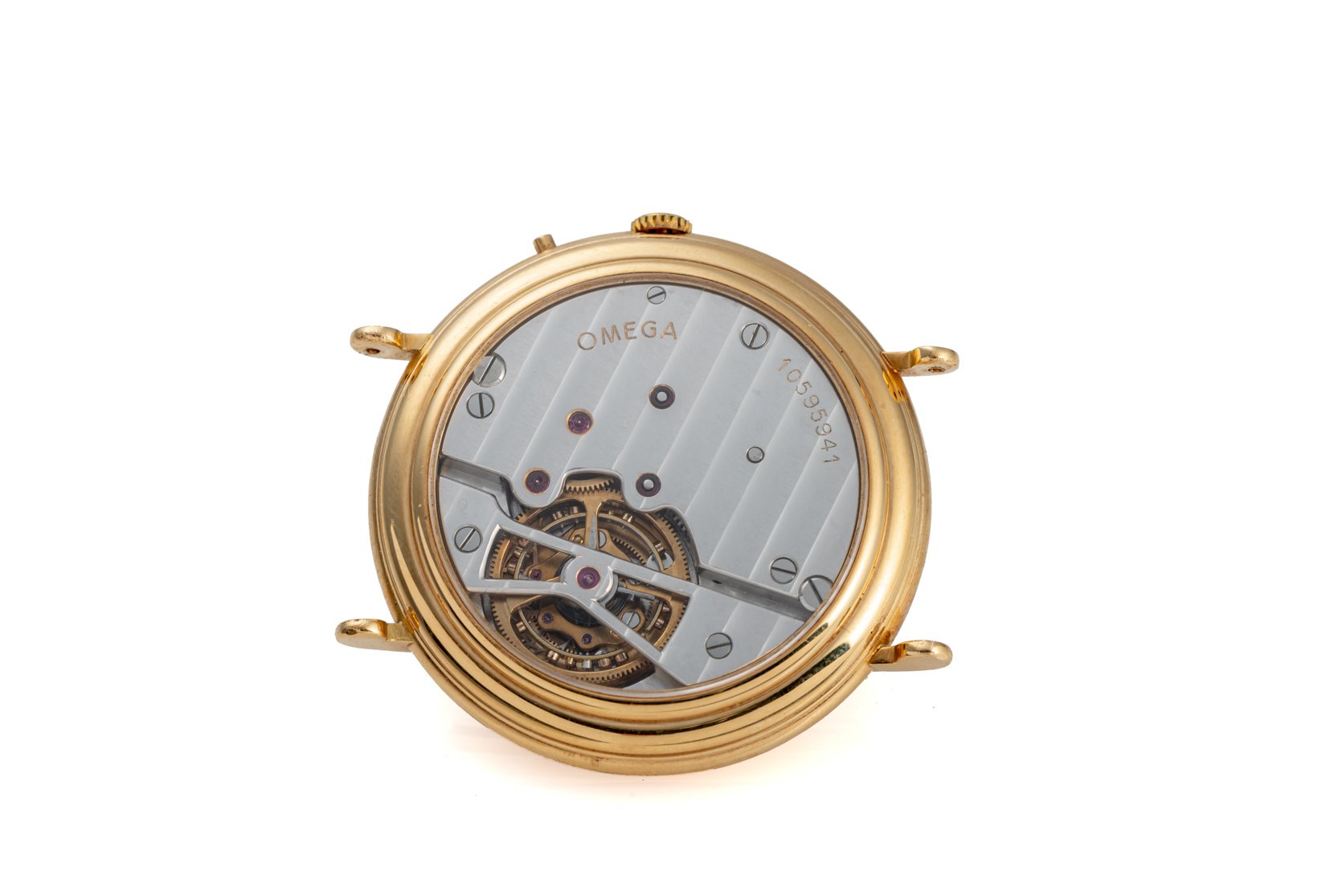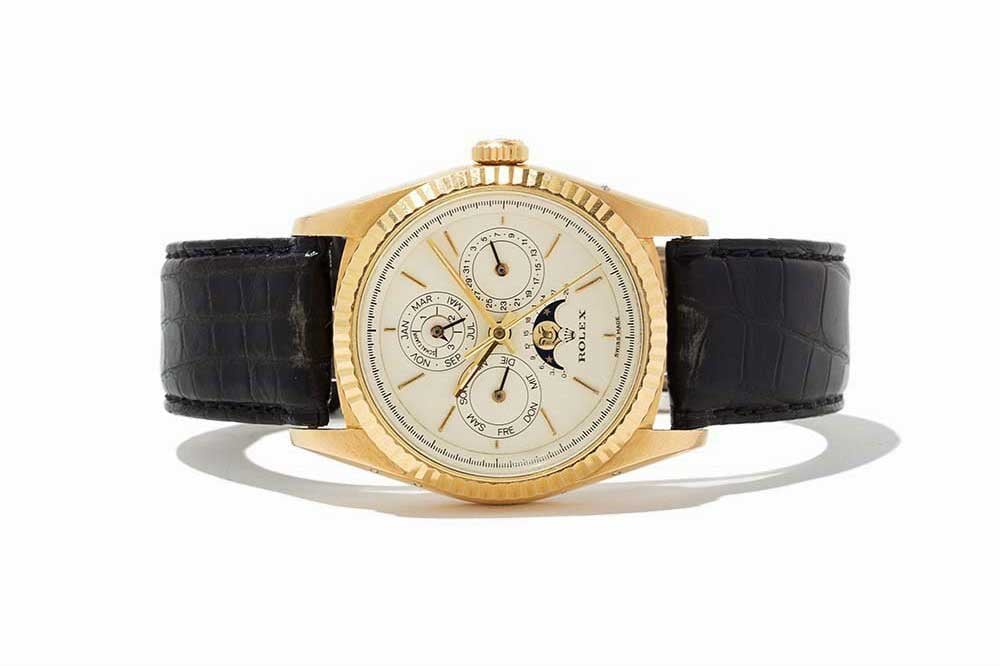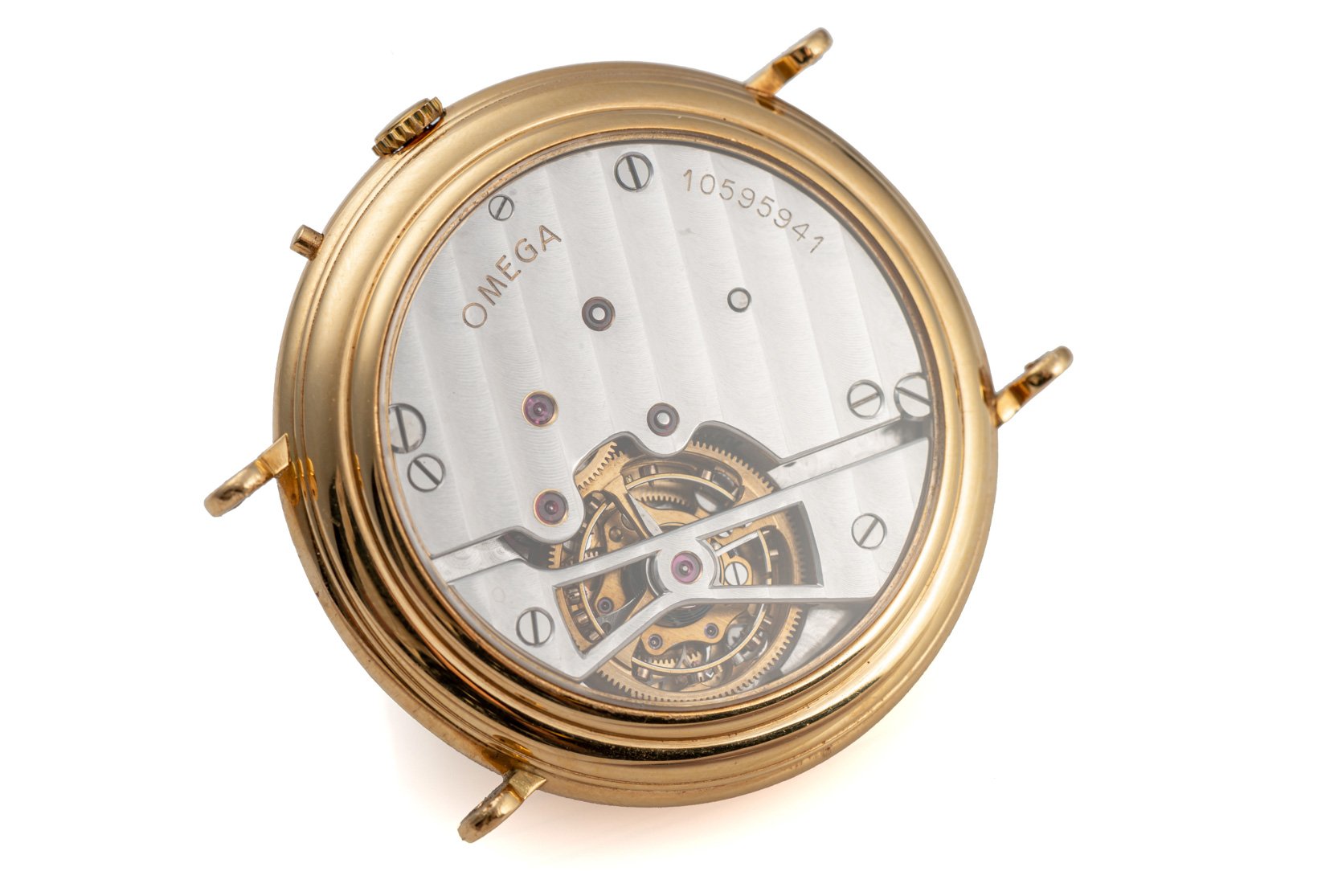Unique Omega Tourbillon At Antiquorum May 2021 Auction
I am delighted to be sharing my research on a newly discovered and unique Omega coming up for auction at Antiquorum in Geneva. You can see the full catalog here. But first, I will go back through a bit of history to put things in context.
When we think of Omega watches, each of us will likely have an image of a particular watch pop into our minds. In my case, it’s usually a Speedmaster. However, among its peers of the biggest brands at the top of the Swiss watchmaking industry, Omega is one of the most varied. Historically speaking, it might even be the broadest. It has covered more categories, made more references and calibers, and ventured into more prototypes than many of its peers.
A unique tourbillon
The other brands I am referring to are the top five Swiss watch brands including Rolex, Patek Philippe, Audemars Piguet, and Cartier. And of these brands, do you know which one created the first Swiss tourbillon wristwatch? You might be surprised to learn it was Omega. That watch, the Caliber 30 I, was released back in 1947. It truly was a golden era for the brand.
The tourbillon is not a complication per se, but rather a complicated system that counteracts errors due to gravity by rotating the escapement within a tiny cage. Consequently, chronometric results are improved. Usually, the tourbillon cage rotates in 60 seconds. However, in these early movements, the rotation is completed in 7.5 minutes. The Omega Museum is still actively researching the subject, but this fact came to light in 2017, when the original 1947 prototype watch surfaced at auction and Omega found the original plans and even photos of the wristwatch in its archives in time for the auction, which can be found here. My 2017 article on that auction, which includes the watch, can be found here.
Researching the Omega Tourbillon
According to the documents in the archives, Omega began researching wristwatch Tourbillon movements just after WWII in 1946. The brand’s goal? To improve the precision of the wristwatch movements it submitted to the Geneva, Neuchatel, and Kew-Teddington Observatory trials (chronometric competitions).
The first prototype wristwatch was also finished in 1947…
The plans and drawings are at the museum. Although exact quantities of the 30 I caliber produced are still not clear, Omega estimates between 12 to 20 movements were produced in 1947. They had been produced specifically for chronometric competitions. The first prototype wristwatch was also finished in 1947 and the movements were submitted to the Geneva Observatory trials between 1948 and 1952. This leads us to the next question: where did the rest of these movements go?
Seven Omega Tourbillons in 1987
A batch of at least seven of these movements remained at Omega. This batch was unearthed 40 years later in the 1980s. They were refurbished and brought up to the technical standards of the time. In 1987, seven watches were assembled in either yellow gold or sterling silver with sapphire case backs to display these important movements to the special (VIP) clients for which they were intended.
…a new tourbillon to celebrate 100 years of the Omega brand name…
It is possible that not all the movements were able to be refurbished and maybe some had to be used for spare parts. Clearly, the project remained dear to Omega as in 1994 the brand produced a new tourbillon to celebrate 100 years of the Omega brand name with the central and front display tourbillon movement. It remains in the De Ville collection to this day.
Jay-Z
1987 seems to be an important year for these tourbillons and it is very likely that Omega was reeling from the severe effects of the quartz crisis and needed to generate some big sales. Meanwhile, enter a virtually unknown 29-year-old passionate watchmaker. He was skilled in restoration and complications and found himself four years away from launching his own brand: Frank Muller. In the early 1980s, while doing restorations independently for brands like Patek Philippe, Frank Muller had acquired one of these Omega 30 I tourbillon movements.
The end result was this unique and stunning Omega tourbillon chronometer.
In his spare time, he refurbished and decorated the movement. He commissioned a guilloché dial to be made in Geneva by Tille. Perhaps most impressively, he ordered a special 39.5mm 18K yellow gold case with step bezel and sapphire see-through back to being crafted by Jean-Pierre Hagmann — the famous case maker for Patek Philippe. The end result was this unique and stunning Omega tourbillon chronometer. With the help of recently discovered research by previous Omega historian Marco Richon, the full history has come to light.
A Rolex perpetual calendar
It is interesting as well to note that among his other pet projects, Frank Muller also made a Rolex perpetual calendar. This complication was never offered by the brand commercially. He presented it in a Datejust 16238 case in 1987 as well. Once debated, that watch is also now a part of Swiss watchmaking history and was even spotted on the wrist of American musician Jay-Z in 2018. Maybe he should buy this Omega to have the ultimate pair.
Tracking down previous Omega Tourbillon watches
As far as tracking down these movements and results, here’s what I have been able to find:
1950: Geneva Observatory — mvt — 10,595,933 (record 867.7 points)
2000: Antiquorum — yellow gold — 10,595,937 (sold CHF 102,500)
2003: Antiquorum — sterling silver — 10,595,935 (sold CHF 124,500)
2007: Antiquorum — yellow gold — 10,595,936 (sold CHF 215,750)
2007: Antiquorum — sterling silver — 10,595,938 (sold CHF 256,000)
2017: Phillips w/ B&R — stainless steel — prototype (sold CHF 1,428,500)
2021: Antiquorum — yellow gold — 10,595,941 (Est CHF 100,000-200,000)
2021: Christie’s — sterling silver — 10,595,935 (second time at auction, Est CHF 90-170K)
This unique Omega tourbillon by Frank Muller is lot 444. It carries an estimate of CHF 100,000–CHF 200,000. If you like it, tune in to the Antiquorum auction. It is due to take place on May 9th in Geneva. The link to this lot is found here.

